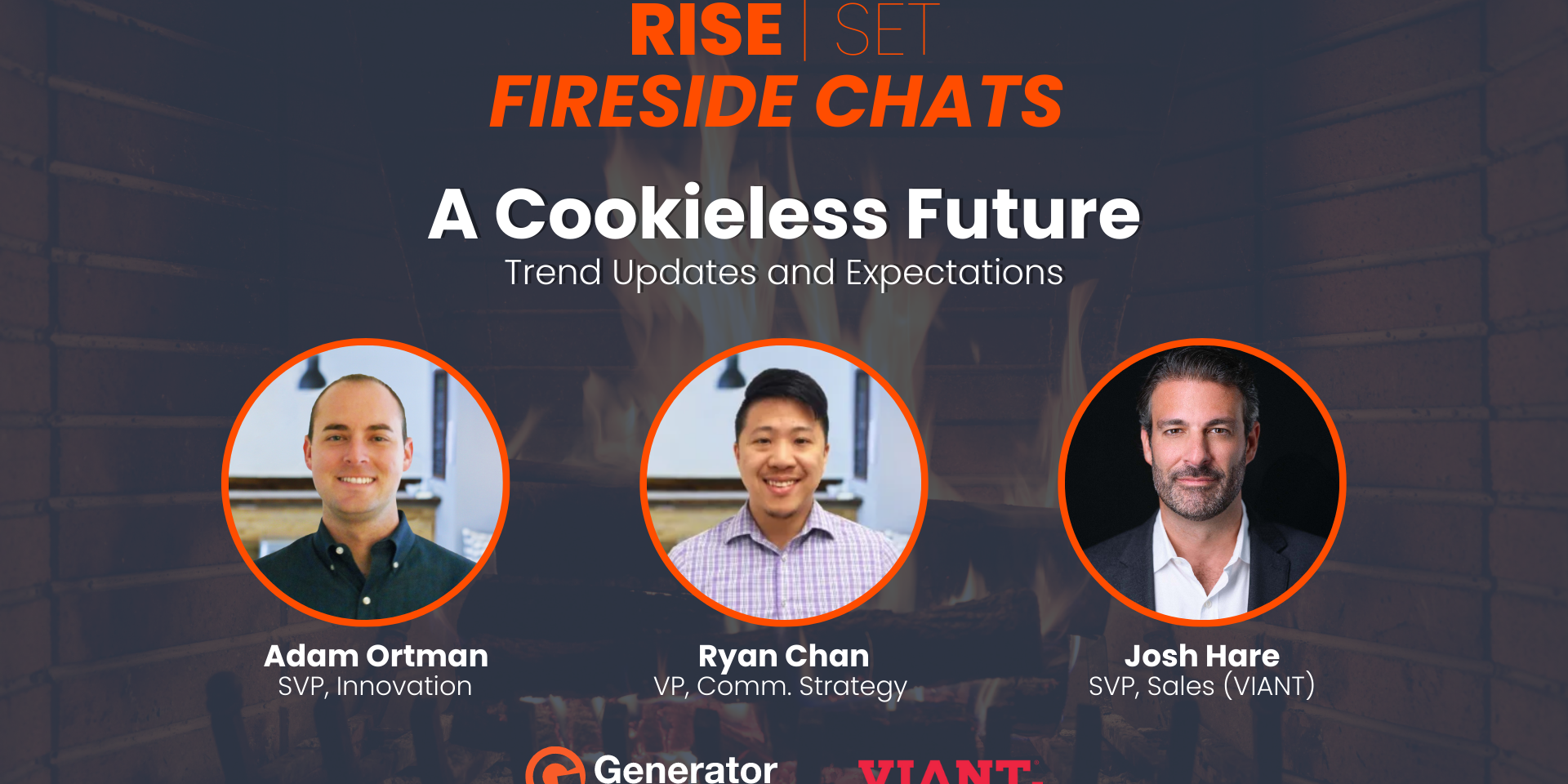HOW TECHNOLOGY HELPS LEVEL THE PLAYING FIELD FOR SMALL BUSINESS MARKETERS
wirtten by Adam Ortman, Director of Innovation and Technology, Generator Media + Analytics
This article was published by business.com on July 11th, 2019
Whether you are leading a small or midsized business or an industry titan, effective marketing is vital for growth. Unfortunately, smaller companies must compete for the same shortened attention spans, interest, and page views as much larger competitors.
Category leaders have an inherent advantage when it comes to marketing; the more media dollars a brand has at its disposal, the greater its potential reach. This creates a snowball effect. More reach results in higher brand awareness, which can translate into increased loyalty among customers and more revenue to flow back into the advertising budget.
How can smaller, challenger brands compete against larger budgets? There are four main things to think about:
- Your specific media goals should always be tied to your company’s bottom line.
- Used effectively, technology can level the playing field for marketing budgets of every size.
- Personalization strategies and automation tools can be incredible assets for challenger brands.
- Larger businesses have access to the same strategies and tools, so you’ll need to find ways to differentiate your message.
When trying to take on a larger competitor, small businesses shouldn’t think in terms of growing market share. Your specific media goals should always be tied to your company’s bottom line — and growing market share is not the answer. Smaller brands need to spend their money strategically because challengers will always struggle to outspend category leaders. You don’t just want to generate leads; you want to find high-quality leads that are likely to convert quickly.
Thankfully, advances in digital marketing technology allow smaller brands to target individualized audiences, automate processes, and make smarter decisions. When used strategically, technology can effectively level the playing field for marketing budgets of any size.
Before you use the first digital marketing technology you come across, you need to know how your messaging will compete against the big brands to truly connect with your customers. Larger businesses have access to the same strategies and tools, so you’ll need to find ways to differentiate your message.
I call it fishing with bait rather than a net. Think about how your brand is different. What makes you — and your customers — genuinely unique? Understanding your key differentiators allows you to stretch the value of each dollar you spend.
Speaking of spend, your marketing efforts will be most successful if you focus on variables that you can measure explicitly. It’s even more important for marketers who have smaller budgets to ensure each dollar spent is in service of maximizing profit. After all, it’s hard to know whether your bait is working if you don’t keep track of nibbles and catches. When you allow data to be your compass, you get results that can be scaled.
Once you’ve determined the best messaging and differentiators to reach your target audience — as well as the best ways to measure and scale success based on those efforts — then digital marketing technology will help you execute competitively. The advent of digital media makes it possible to create highly targeted, effective campaigns without breaking the bank.
You don’t have to cast a wide net — you need to fish in the right places with the right bait. Technology will help you do just that. Sophisticated tools can enhance your targeting, search engine marketing, digital video, programmatic buying, and other marketing tactics. Here’s how to take advantage of digital marketing technologies on a smaller budget:
1. Personalization strategies
According to a 2019 survey, 98% of marketers agree that personalized ads lead to a measurable lift in engagement. What’s more, 85% of marketers say their clients and prospects expect personalized messaging. Personalization in marketing often comes in the form of advertisements, website content, email campaigns, and behavioral-based targeting. As a marketer, you might personalize a message based on location, interaction history, preferences, or device use.
With the right tools, you can serve dynamic ads that are personalized to a specific consumer’s location. A display ad might show one consumer specific content about your brick-and-mortar location. Another display ad might reference the consumer’s city or neighborhood, leading to a geographically specific landing page.
Some brands rely on consumer accounts, which are tied to the consumer’s preferences, loyalty rewards, ongoing purchases, or suggested products. This is especially popular in the travel industry. The data collected through these accounts can provide marketers with key insights about where consumers are in their purchase journeys.
2. Online behavioral targeting
Audience targeting capabilities allow marketers to use prospective customers’ past behaviors to justify showing them advertisements. Instead of spending money to cast as wide a net as possible, you can focus on the highest-quality prospects.
Marketers use techniques, such as audience segmentation, customized customer lists, customized affinity audiences, and more, to better understand where consumers are in the buying process. Based on that information, marketers can deliver specific, personalized messaging. If you know a customer looked at a pair of shoes on your website but didn’t make a purchase, for instance, you can serve that customer an ad depicting that exact pair of shoes.
One of the most effective ways to segment audiences based on behavior is defining in-market audiences, which is a segmentation that Google creates. In-market audiences include shoppers who are actively seeking a specific product or service. We can identify them based on the past 24 to 48 hours of a consumer’s online activity, including the content they’ve viewed, the videos they’ve watched, and the search terms they’ve used. A person who is in-market for a new dirt bike probably looked at online content about off-road motorcycles, watched demonstration videos, perused reviews, etc. This gives you key insights into a consumer’s needs, which you can address via targeted content.
Taken a step further, marketers can pivot these in-market consumers to adjacent products or services. Consumers who are in-market for a new home might be open to targeted content around homeowners insurance, cleaning products, or organizational services. Understanding life events and significant purchasing decisions can help marketers proactively get in front of consumer needs.
The best thing about in-market audiences is that they are turnkey segments that are ready to use. It takes about five minutes to add this audience to a campaign. For brands with smaller marketing budgets, this type of low-maintenance segmentation is invaluable.
Another strategy at your disposal is customized customer lists. These are often housed within your CRM and can be segmented to find customers with the largest lifetime value, which you can use as a model for finding look-alike audiences. Be sure to target high-volume lists so that search and social engines can capture the best profile matches possible. I recommend at least 10,000 entries. These tactics allow you to enhance your targeting strategies further to focus your media dollars and differentiate from your competition.
3. Automation tools
Many popular digital vendors offer a suite of automated tools that allow you to manage campaigns of any size efficiently and effectively, even if you’re a team of only one or two people. Marketing automation tools give you the ability to personalize engagement at scale along every critical point of the sales funnel, from lead generation to nurturing and scoring. With smart automation, you can minimize tasks that are time-consuming or that don’t generate revenue.
But automation isn’t a quick fix for ineffective marketing. Before you invest heavily in automated technologies, make sure you spend time familiarizing yourself with the available tools. Your goal is to maximize the value of every dollar you spend, so test before you buy to minimize any risk. Try out the tools on a small portion of your media spend to understand the impact it will have on your workflow and campaign performance.
4. Artificial intelligence and machine learning
Artificial intelligence, or AI, and machine learning go hand in hand with automation, and these technologies are changing advertising completely. Today’s advertisers collect massive amounts of data — too much for any campaign manager to turn into actionable insights. That’s where AI comes into play.
Using machine learning, AI can analyze vast quantities of data and structure insights to absorb and act on them. Google has been pushing AI on campaigns for years, incorporating features such as enhanced CPCs, keyword-match-type sensitivity and daily budget thresholds, among others.
What should you do when you’re looking to enhance your media practice by leveraging AI? Tracking is the first step. Feeding “the robots” the highest-quality data possible is crucial for a successful AI implementation. Determine your brand’s bottom line for growth, and collect data to support your decisions.
Once the data is appropriately tracked, start testing out a bid strategy to maximize conversions, target return on ad spend, target cost per acquisition, or any other metrics you’re measuring. Pick one or two high-volume digital campaigns for starters, allow these to run to a statistical significance of at least 90%, and then compare performance data from before and after your efforts. Depending on the results, expand the test or make adjustments and start over.
Competing with the big players in your industry means being laser-focused on what you’re trying to accomplish whenever and wherever you spend money on advertising. The best way to win is by measuring, tracking, and continually working to refine your messaging so that it appeals to the customers you know will buy from you. If you’re a small business, digital marketing technologies such as personalization, behavior tracking, automation, and AI have made winning easier than ever.
Related Posts
August 1, 2023
EMBRACE THE FUTURE OF ADVERTISING: THE ERA OF COOKIELESS TARGETING
In this quarter's session, we delve…
July 20, 2023
THE TOP 7 DIGITAL MEDIA TRENDS CMOS NEED TO KEEP UP WITH IN 2023
Discover the 7 vital media trends for…



